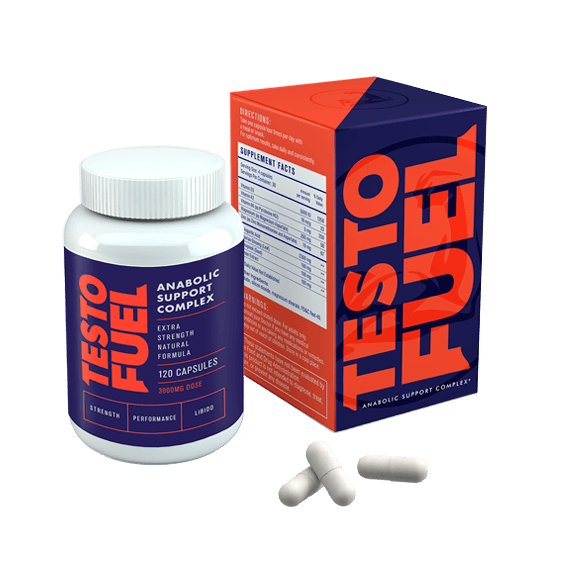Gaining Muscle After 50 the Easy Way
In this definitive guide to muscle building after 50 we take you through everything you need to know to build lean mass, boost fitness and improve the way you look
Whether you’ve lifted weights all your life or are starting a program of strength training for the first time, gaining muscle after 50 is a great way to look and feel better.
Not only does weight lifting increase muscle mass, it also promotes health, wellness and longevity.
If you do it the easy way.
From better functional capacity, to moving without aches and pains – strength training adds life to your years, and years to your life.
In this definitive guide we take you through everything you need to know about gaining muscle and lifting weights the easy way.
What does this program cover?
| Goal: | Increase strength and build muscle |
| Aimed at: | Guys over 50 |
| Program duration: | 8-12 weeks |
| Workout duration: | 45-60 minutes |
| Equipment needed: | Barbell, dumbbell, resistance machines, cables |
Strength Training After 50
When it comes to starting a strength and muscle building plan after 50, you might not know where to start.
After all, there’s so much information out there that it can be difficult to know what will work best for you.
Maybe you’ve been a regular gym goer in the past, but over time you found that those gym sessions gradually slid away in favor of work or family commitments.
And now your gym membership card is just collecting dust.
But now it’s time to make some changes.
Planning your muscle building schedule
Having a program that you can follow is important as it helps to keep you ‘locked in’ to your end goal. And a guide like this that educates you on why your program is laid out like it is will help to give you confidence in your actions.
Consistency is key.
One of the most important aspects of successful exercise training is consistency.
Building muscle is about regularly fitting your gym sessions into your week; and being patient too.
Results don’t happen overnight.
But sticking with the plan will guarantee results if you put it into action regularly enough.
What’s important is that you analyze your schedule and approach the gym like a meeting or an appointment. You work hard enough to give yourself just 2-3 hours per week to craft out a strong physique.
So do it.
Decide when you can fit your workouts into your schedule and how long you have free. If you can manage just 3, 60-minute workouts per week you’ll be well on your way to gaining muscle and greater strength.
So be selfish and get those gym sessions in your diary.
Work out with intensity, but train clever
You might be concerned that the aches and pains that have crept in over the last few years might stop you from reaching your goals. Or you might be aware that as a busy, career-minded guy you haven’t got the time to commit like you once had.
Just walking into the gym and lifting heavy stuff for an hour might have got you somewhere when you were in your twenties.
But now that you have more experience and wisdom, you might as well use it.
Let’s face it – you probably can’t train as hard as you used to.
It might take you longer to recover or there might be some exercises that you just can’t do anymore, no matter how hard you try.
Building muscle after 50 is all about efficiency.
You want to maximize results with as little work as possible.
Whoever said that a guy over 50 can’t build muscle was plain wrong though. But you do have to train clever.
So if you get pain from one exercise, swap it out for another.
If you find that 3 workouts per week leaves you tired and low on energy, go with 2 to begin with.
It’s your body and you know it best.
[Related Article: Best Supplements for Men Over 50 ]
Key Point: Building muscle after 50 is all about efficiency and knowledge. You might be limited by aches or pains, but with a good program you’ll develop groundbreaking strength and muscle mass to be proud of.
Bodybuilding after 50 – Gaining Muscle to Improve Health and Performance
After 50, the average man loses 2% of their muscle mass each year [1].
Not only will this reduce muscle strength and functional ability, it can also lead to a number of health-related issues too.
Age-related muscle loss is referred to as sarcopenia.
It’s an illness that can lead to reduced bone strength, increased risk of metabolic disease, and has also been linked to early death too [2].
How may times per week should you lift weights?
This will vary from one man to the next, but the important thing here is that you balance training load with recovery.
Shooting for 2-3 workouts per week will gradually introduce you to these challenging but rewarding workouts. You can then build up from there.
If time and energy allows it we’d recommend 3-4 days per week in the gym to really boost your chances of developing strength and gaining muscle.
With all the enthusiasm in the world though, don’t go above this or you’ll run the risk of injury – particularly for the first 8 weeks.
Giving yourself recovery is just as important.
Remember, you break muscle down in the gym and build it during recovery.
Full-body workouts or split routines?
If you were a regular gym goer back in the day you might have followed a muscle split program.
This is where you trained legs one day, back on another and chest on a different day.
It’s a great way of building muscle if you have plenty of time available each week to devote to each muscle group.
It’s what’s called the bro-split these days.
But it’s also pretty grueling, and will lead to muscle soreness for days and days after absolutely annihilating each muscle for 12-15 sets per workout.
But we’re all about training clever here.
Research shows us that performing multiple full-body workouts per week grows significant amounts of muscle mass [3].
Full-body workouts lead to the same increases in muscle mass (in fact some studies show it stimulates even more muscle), but without as much soreness.
It also means that you can use a smaller number of different exercises too as you don’t need as many varations.
The role of your hormones in gaining muscle mass
One of the reasons you begin to lose muscle mass after 50 is that your body naturally begins to produce less testosterone – a natural steroid and androgenic hormone.
Once you reach 40 years old, the regions of your brain that are responsible for telling your testes to make more of this potent muscle building hormone begin to slow down.
The result?
Less testosterone.
And that’s bad.
This will lead to:
- Lower levels of strength, power and muscle mass
- Accelerated muscle loss and decreased protein synthesis
Lifting weights helps to trigger greater release of testosterone by slapping your brain around the face, forcing it to speed up hormone production.
Heavy weights using rep ranges of 5-12 work best for boosting testosterone release [4]. And taking every set to fatigue is a surefire way of gaining muscle and optimizing hormone levels.
[Related Article: Best Testosterone Boosters for Men Over 50 ]
Always warm up properly
If you ever watch the younger, less experienced guys in the gym they always fall into the same trap. They literally take off their jackets, load up a bar and get straight into their working sets.
They never warm up.
And while they might get away with it for a few years, the stress of skipping the preparation phase of a workout will soon catch up with them.
Taking the time to go through some mobility exercises helps to lubricate your joints prior to heavy lifting. Like a well oiled machine, this helps to reduce unnecessary stress and help to make your movements more fluid.
A good warm also helps to optimize performance by waking your nervous system up too.
Try 20 reps of the following exercises to prepare for a strength workout:
- Body weight squats
- Lunges
- Shoulder circles
- Neck turns
- Trunk twists
Free weights or machines?
Strength training to gain mass is all about applying a force to your muscles. When that force is greater than what your body is accustomed to, it creates microscopic tears in your muscle fibers.
In return, your body puts strategies in place to repair this tissue so that it grows bigger and stronger.
The more often this process occurs, the bigger your muscles will grow.
How that force is applied doesn’t really matter. Whether it’s from dumbbells, barbells, body weight or fixed machines doesn’t affect what happens within the cells of your muscle.
Now, free weights do include more stabilizer muscles. Many people think that for this reason they are better. But machines allow you to focus on isolating muscle groups much more efficiently.
It’s really a matter of preference when it comes to choosing equipment.
The best approach to building muscle after 50 is to mix things up and get the benefits from both.
Key Points: Gaining muscle after 50
- Aim for 3-4 strength training sessions per week
- Focus on compound exercises as part of a full-body workout
- Always take the time to warm up
- Train hard, but train smart – use free weights and machines in your program
- Using heavy weights will optimize testosterone release and protein synthesis
- Consider dietary supplements to solidify your nutrition
Muscle Building Workout Routines After 50
Okay, you’re in your 50’s.
But that doesn’t mean you have to slow things down or cover yourself in bubble wrap.
Should you be taking it easy, maybe going for a walk or taking up Yoga to keep healthy?
Hell no.
This is an opportunity to build some quality muscle by working hard and lifting big.
And this is what you’ll get with this program.
One of the key features of a well-structured strength training plan is that it bends the boundaries of what you’re capable of, without pushing you too far.
3-day muscle gaining program
In this training schedule we’ve given you 3 separate muscle swelling, strength building programs to fit into your week.
You’ll be following a full-body program on each day, allowing you to hit each major muscle multiple times per week.
Choose weights that fatigue you within the rep range you’ve been given, and keep your rest times strict to maintain productivity.
This is a simple, logical plan bursting at the seams with exercises that work. Here is your program to gain muscle, ramp up strength and carve out a new you…
| Number | Session 1 | Session 2 | Session 3 | Reps and Sets | Rest Times |
|---|---|---|---|---|---|
| 1 | BB Shoulder press | DB Lateral raise | DB Arnold press | 3 x 8-15 | 2-3 minutes |
| 2 | Lat pulldown | Neural grip assisted pullups | BB Bent over row | 3 x 8-15 | 2-3 minutes |
| 3 | Leg press | BB Squat | Leg extension | 3 x 8-15 | 2-3 minutes |
| 4 | BB Deadlift | Lying leg curl | DB Alternate lunges | 3 x 8-15 | 2-3 minutes |
| 5 | DB Bench press | BB Bench press | DB Incline press | 3 x 8-15 | 2-3 minutes |
| 6 | Cable seated row | Reverse fly machine | BB Bicep curl | 3 x 8-15 | 2-3 minutes |
[Related Article: Best Multivitamins for Men Over 50 ]



